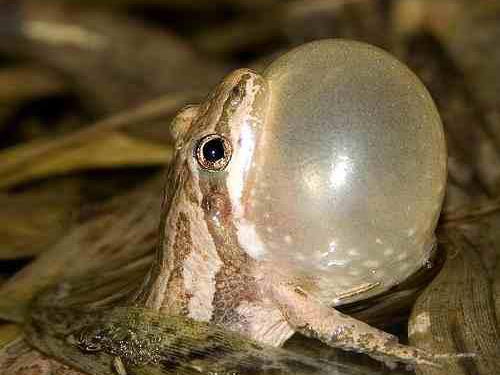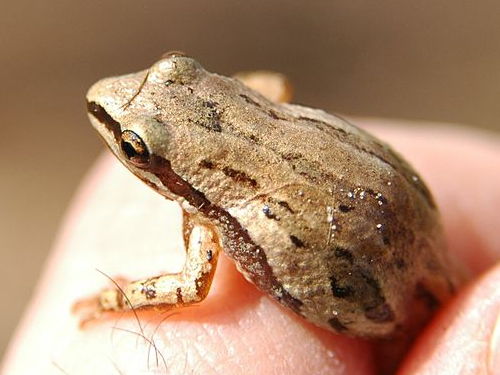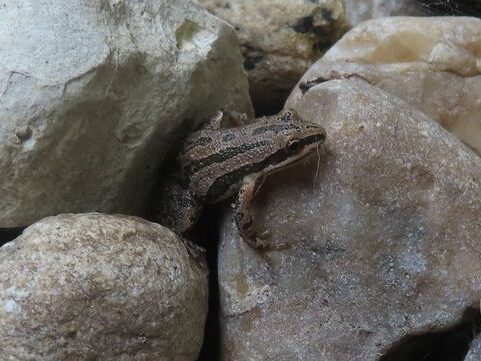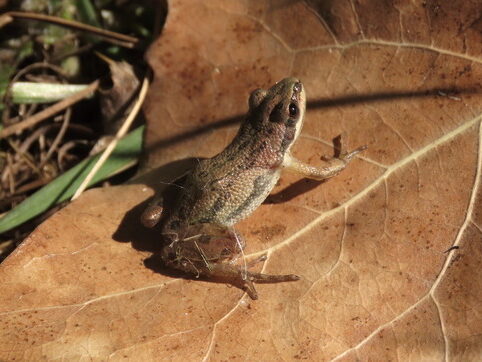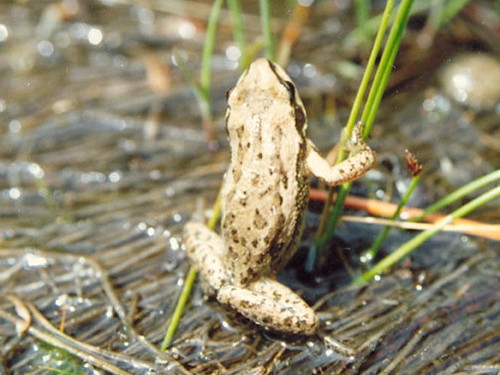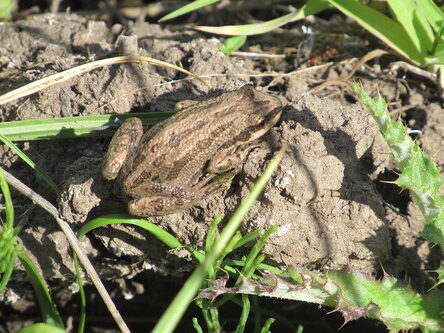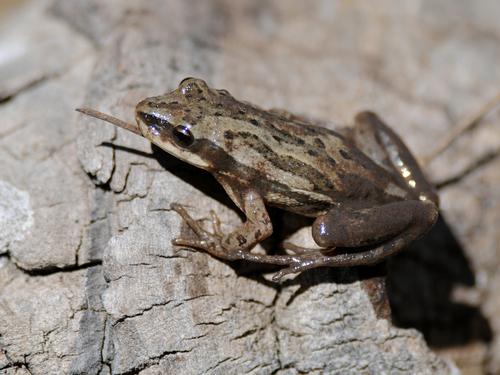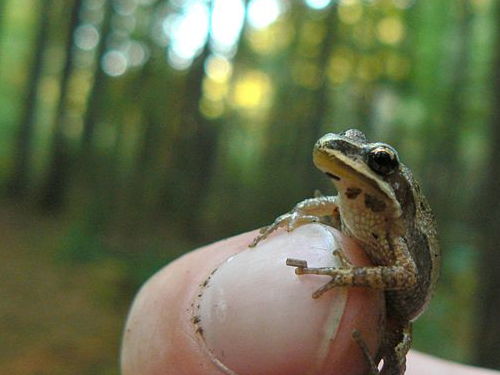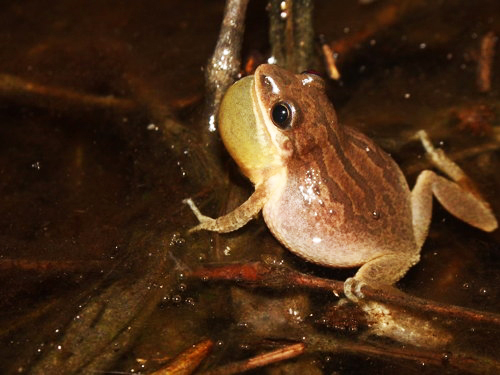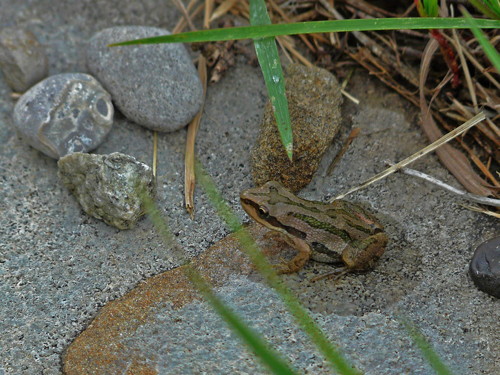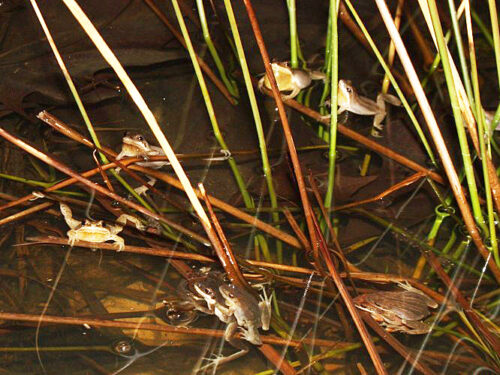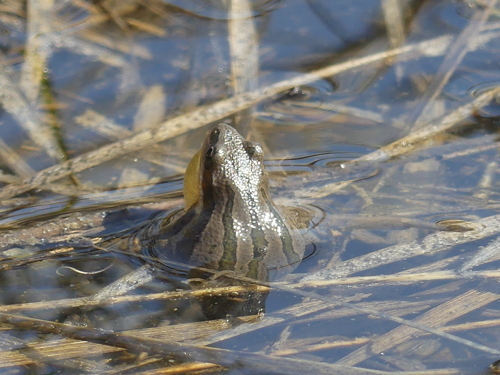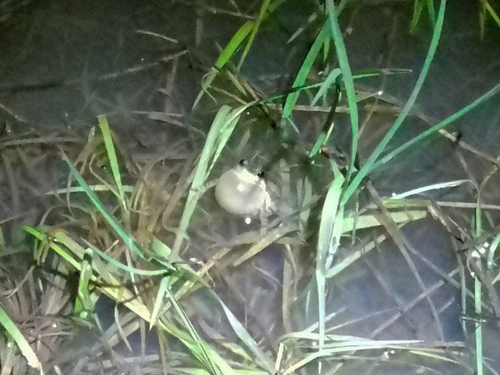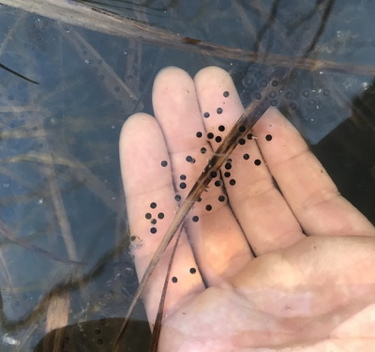Chorus Frogs
Scientific name:
Pseudacris maculata (boreal)
Pseudacris triseriata (western)
Type: Amphibian
Family: Hylidae (Treefrogs)
Size: Up to 1.5 inches long
Weight: Up to 0.01 ounces
Life span: Up to 3 years
Physical Description
Chorus frogs are small without significant toe pads or webbing between the toes. These frogs are light tan, gray, brown, or even greenish with variable patterning. In general, though, they have three dark stripes down the back that may be broken or replaced by spots. The color of these frogs darkens with cold weather. Males which are typically smaller than females have a dark throat patch during the breeding season.
There are two species of chorus frogs present in New Mexico: the boreal Pseudacris maculata and the western Pseudacris triseriata. These two species are almost identical physically except for the shorter hind legs of the boreal chorus frog. However, they are best distinguished by the males’ call.
Boreal Chorus Frog (shorter hind legs)
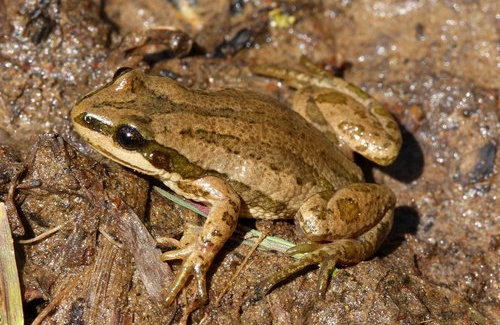
Western Chorus Frog (longer hind legs)
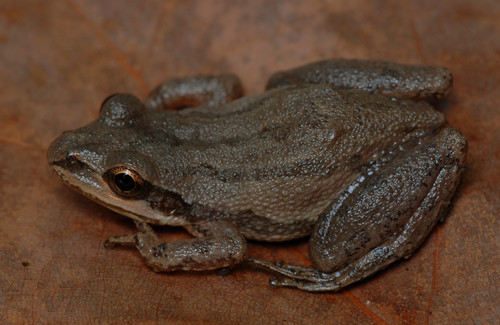
Range and Habitat
Chorus frogs are found from Canada to the Gulf of Mexico, and from the east coast to the west. They are capable of living a wide range of altitudes and temperatures.
These chorus frogs are typically found on the ground or in low shrubs. They prefer forest openings near a breeding pond. Since sites without fish are preferred for breeding, chorus frogs can be found near shallow and temporary ponds, cattle tanks, flooded fields, wet meadows, and roadside ditches.
Boreal Chorus Frog
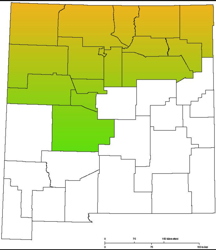
Western Chorus Frog
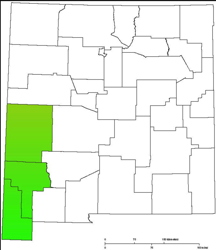
Diet
Chorus frogs feed on small insects and other invertebrates such as flies, springtails, spiders, snails, and ants.
Behavior and Social Life
Chorus frogs are shy and secretive. They are nocturnal and not commonly seen outside of the breeding season when they come out of hiding to call on warm nights. Males use a special call to attract females to potential breeding sites. During the peak of the season, males may call during the day as well as at night. The higher the temperature, the more frequent the call resulting in up to 90 calls per minute.
The calls of both the boreal and the western chorus frogs are loud, easily heard. However, the two species each have their own call. Western chorus frogs sound like “pprreeep” or someone running a finger down the teeth of a comb. In contrast, the call of the boreal chorus frog is longer and slower.
Chorus frogs rely on hiding to keep them safe from predators. If disturbed, they will jump down into the nearest body of water, or hide under leaf litter, logs, rocks, or loose soil. They use their terrestrial hiding spots for hibernation during winter.
Boreal Chorus Frog
Western Chorus Frog
Hopping Around
Life Cycle
Chorus frog breeding begins very early in the spring, potentially with snow still present. The males call during the day as well as at night to attract a mate to an appropriate breeding site. Each female lays up to 1,500 eggs. The eggs are deposited in groups of 20 to 100 eggs and attached to submerged vegetation or debris. Tadpoles hatch in about a week and begin to metamorphose into frogs in a process that is usually complete by early to mid-summer. The young frogs will reach maturity in one to two years.
Mating
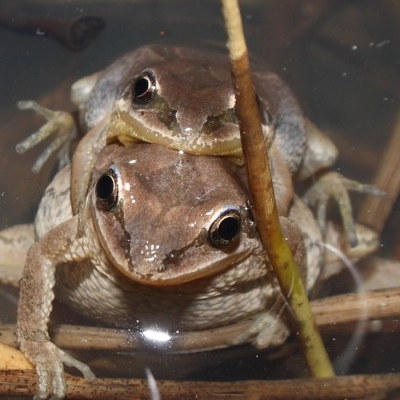
Early Tadpole
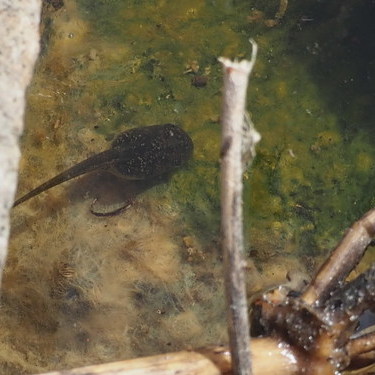
Developing Legs
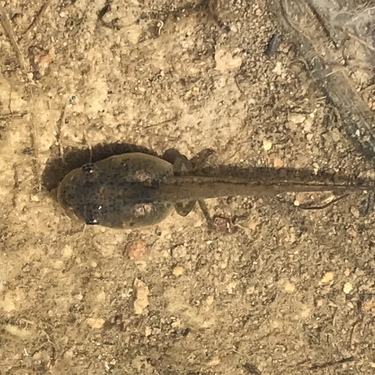
Later Stage
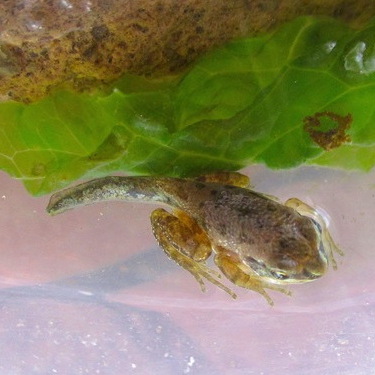
Ecological Role
Both adult chorus frogs and their tadpoles have important ecological roles. The frogs and their young serve as both predators and prey in the two different habitats. The permeable skin of all stages of the chorus frog makes them susceptible to many contaminants and therefore a critical indicator of environmental health.
Interactions With Humans
The secretive nature of chorus frogs means that they rarely interact directly with humans and are not known to have any adverse effects on individuals.
Interesting Facts
- Male frogs are able to inflate their vocal sac with air in order to create sound.
- The call of the chorus frog can be heard up to half a mile away.
- An individual vocalization can last as long as 2 seconds and can be repeated as much as 20 times per minute.
- Chorus frogs are thought to have evolved on earth 200 million years ago.
- The chorus frog can survive being frozen.
- A group of frogs is called an army.
- Large groups of frogs come together during the breeding season to search for food and to increase their chances of survival.
- Frogs have a ‘drinking patch’ on the underside of the belly and thighs that allows the absorption of water through the skin.

